| Pages:
1
..
3
4
5
6
7
..
18 |
Laboratory of Liptakov
International Hazard
    
Posts: 1386
Registered: 2-9-2014
Location: Technion Haifa
Member Is Offline
Mood: old jew
|
|
https://www.dipolnet.com/self-amalgamating_tape_pib_scapa_25...
Development of primarily - secondary substances CHP (2015) Lithex (2022) Brightelite (2023) Nitrocelite and KC primer (2024)
|
|
|
Fulmen
International Hazard
    
Posts: 1716
Registered: 24-9-2005
Member Is Offline
Mood: Bored
|
|
I haven't seen the videos, what's the gasoline for? I just soaked the tape (any self-amalgamating tape should work) in xylene for a few weeks,
decanted and precipitated it with acetone. I'm sure toluene is better but xylene works too.
We're not banging rocks together here. We know how to put a man back together.
|
|
|
Laboratory of Liptakov
International Hazard
    
Posts: 1386
Registered: 2-9-2014
Location: Technion Haifa
Member Is Offline
Mood: old jew
|
|
Xylene is good for extraction PIB from self-amalgamating tape. OK. Good message. But beware. PIB = Poly Isomere Butylene rubber. At this material is
pretty important the long of isomers chains. Respectively midle (average) long of isomers chains. Therefore, not every tape can have a same long of
chains. But due to the globalization of everything, it can be assumed that the tapes will have the same PIB chains around the world.
Development of primarily - secondary substances CHP (2015) Lithex (2022) Brightelite (2023) Nitrocelite and KC primer (2024)
|
|
|
ManyInterests
National Hazard
   
Posts: 930
Registered: 19-5-2019
Member Is Offline
|
|
| Quote: | | Xylene is good for extraction PIB from self-amalgamating tape. OK. Good message. But beware. PIB = Poly Isomere Butylene rubber. At this material is
pretty important the long of isomers chains. Respectively midle (average) long of isomers chains. Therefore, not every tape can have a same long of
chains. But due to the globalization of everything, it can be assumed that the tapes will have the same PIB chains around the world.
|
Good, so I can dissolve PiB in xylene instead of gasoline? That will make things easier. Xylene is available at almost every hardware store where I
live (But I need to make a special order for toluene).
I think that while Scapa2501 is a good brand. Maybe a self-amalgamating tape brand where I live is also as good? It'll need to be tested. But that's
the fun part!
Edit: One last part. When building a blasting cap/detonator, is it best to put everything in and press only at the end, or press at every addition?
Like pour the ETN, press, pour the NHN, press, etc etc?
[Edited on 25-10-2021 by ManyInterests]
|
|
|
katyushaslab
Hazard to Self
 
Posts: 81
Registered: 19-1-2021
Member Is Offline
Mood: precipitating
|
|
Pressing at every addition is what I would recommend, that way you get better control of the densities of different regions. Having a high density
"output side" of secondary is good, but you want a lower density region between it and the primary to ensure a good transition, if that makes sense.
|
|
|
Laboratory of Liptakov
International Hazard
    
Posts: 1386
Registered: 2-9-2014
Location: Technion Haifa
Member Is Offline
Mood: old jew
|
|
Exactly, all was said katyushaslab
Development of primarily - secondary substances CHP (2015) Lithex (2022) Brightelite (2023) Nitrocelite and KC primer (2024)
|
|
|
Fulmen
International Hazard
    
Posts: 1716
Registered: 24-9-2005
Member Is Offline
Mood: Bored
|
|
In addition you can only press so much before the top material will bind to the casing and prevent the bottom part to be properly compacted. I would
recommend a height (after pressing) of no more than one diameter at a time.
We're not banging rocks together here. We know how to put a man back together.
|
|
|
MineMan
International Hazard
    
Posts: 1004
Registered: 29-3-2015
Member Is Offline
Mood: No Mood
|
|
I would recommend pressing every .25mm. Ok just kidding.
|
|
|
Laboratory of Liptakov
International Hazard
    
Posts: 1386
Registered: 2-9-2014
Location: Technion Haifa
Member Is Offline
Mood: old jew
|
|
Just press the height the same as the inside diameter. My grandmother always pressed it normally in a vice. And then she just squeezed the other
segments by hand. Finally, Grandma hammering some BP a like the plug. Normally by hammer. And then she went to blow it to the pigs, to the barn. A
like child, I remember, all pighs was totaly deaf....
Development of primarily - secondary substances CHP (2015) Lithex (2022) Brightelite (2023) Nitrocelite and KC primer (2024)
|
|
|
ManyInterests
National Hazard
   
Posts: 930
Registered: 19-5-2019
Member Is Offline
|
|
That's one interesting story!
So I finished my first ETN synthesis. I used granular erythritol and not powder, because I read a long time ago that that was better than powder. Now
my end product (it is drying) appears to be more granular/crystal than powder. Is it safe to gently crush a few micrograms at a time with a rubber
spatula?
I need to find a way to put the cap in my sawdust bucket to press it safely. The reason why is that pressing it might result in the cap being pushed
further into the dust instead of the ETN and NHN being pushed further.
Also one thing I am thinking. While I did manage to ignite black powder in some test caps, I am not sure if I really trust my black powder. Would
using ground up match heads in addition to my electric match be sufficient to ignite the explosive train?
|
|
|
katyushaslab
Hazard to Self
 
Posts: 81
Registered: 19-1-2021
Member Is Offline
Mood: precipitating
|
|
I'd not advise crushing when there are far, far safer ways to do it (recrystallize). I answer this in the other thread: https://www.sciencemadness.org/whisper/viewthread.php?tid=11...
Adding something as inconsistent and sensitive as ground up match heads to your firing train will likely make it less reliable (and more likely to go
pop at the wrong time, killing you). Instead, work out what is wrong with your black powder and fix that. Could you outline the process by which you
are making black powder? We can probably help you out there...
[Edited on 11-11-2021 by katyushaslab]
|
|
|
MineMan
International Hazard
    
Posts: 1004
Registered: 29-3-2015
Member Is Offline
Mood: No Mood
|
|
Quote: Originally posted by Laboratory of Liptakov  | Just press the height the same as the inside diameter. My grandmother always pressed it normally in a vice. And then she just squeezed the other
segments by hand. Finally, Grandma hammering some BP a like the plug. Normally by hammer. And then she went to blow it to the pigs, to the barn. A
like child, I remember, all pighs was totaly deaf.... |
I want your life.
|
|
|
Brightthermite
Hazard to Others
  
Posts: 133
Registered: 26-6-2019
Member Is Offline
|
|
Dont know where you are located but if you can just purchase black powder that would be best.
Us a pie pan or something full of sand as your base. Its firm enough to keep the cap from pressing right up against the inside of the container.
|
|
|
ManyInterests
National Hazard
   
Posts: 930
Registered: 19-5-2019
Member Is Offline
|
|
| Quote: | I'd not advise crushing when there are far, far safer ways to do it (recrystallize). I answer this in the other thread: https://www.sciencemadness.org/whisper/viewthread.php?tid=11...
Adding something as inconsistent and sensitive as ground up match heads to your firing train will likely make it less reliable (and more likely to go
pop at the wrong time, killing you). Instead, work out what is wrong with your black powder and fix that. Could you outline the process by which you
are making black powder? We can probably help you out there... |
I have a batch of gunpowder that I tried to make using the wet method, but I think I botched it somehow. What I did was take the usual proportions of
potassium nitrate, sulfur, and charcoal, grind them as finely as I could, mix them in a makeshift shaker (using two paper cups taped together to seal
them) and then I poured 99% isopropyl alcohol until it didn't appear to absorb anymore and I tried to arrange it into a cake of sort.
The problem occurred is when it didn't form the granulated cake that I could use to breakup using a sieve. I waited for the alcohol to evaporate
before I put it through a sieve anyway and it still ended up as a very fine dust.
When I try to light it using a barbeque lighter the flame just washes atop it and does nothing. If I use a small jet cigarette lighter it does burn,
but does not have that 'poof' characteristic that I've it have in videos where people made it using the wet method. It burns that way, but takes a
bit. If I put it in a paper tube and burn the tube it does burn once the fire reaches it. Ditto if I put an electric match (I just tested it right
now).
But it's just the barbeque lighter thing that is what gets me to doubt it even if it does reliably ignite every where else. When I put it in a pen
body, it burned like a fuse instead of popping like a firecracker. (the same pen body popped quite well when using potassium chlorate/sugar mixture).
Would putting in chlorate/sugar or a wad of nitrocellulose work as well for the igniter? I made a cap that was filled with just nitrocellulose (my
'bad' batch. I have a much better batch) and it quite vigorous in its pop. My 'good' batch of NC burns even faster with very little residue.
edit: My only hesitation in using nitrocellulose is that earlier this year I had made a pair of batches and I left them unused for several months.
While one remained as good as I left it, the other one degraded quite badly and basically turned to goo. I think it might have been the fact that I
didn't wash out all the acids or wash it correctly. My fear is that if I need to store my cap for any period of time, I don't want my cap to either
turn into a dud or spontaneously pop due to some unforeseen degradation.
[Edited on 12-11-2021 by ManyInterests]
|
|
|
MineMan
International Hazard
    
Posts: 1004
Registered: 29-3-2015
Member Is Offline
Mood: No Mood
|
|
Quote: Originally posted by ManyInterests  | | Quote: | I'd not advise crushing when there are far, far safer ways to do it (recrystallize). I answer this in the other thread: https://www.sciencemadness.org/whisper/viewthread.php?tid=11...
Adding something as inconsistent and sensitive as ground up match heads to your firing train will likely make it less reliable (and more likely to go
pop at the wrong time, killing you). Instead, work out what is wrong with your black powder and fix that. Could you outline the process by which you
are making black powder? We can probably help you out there... |
I have a batch of gunpowder that I tried to make using the wet method, but I think I botched it somehow. What I did was take the usual proportions of
potassium nitrate, sulfur, and charcoal, grind them as finely as I could, mix them in a makeshift shaker (using two paper cups taped together to seal
them) and then I poured 99% isopropyl alcohol until it didn't appear to absorb anymore and I tried to arrange it into a cake of sort.
The problem occurred is when it didn't form the granulated cake that I could use to breakup using a sieve. I waited for the alcohol to evaporate
before I put it through a sieve anyway and it still ended up as a very fine dust.
When I try to light it using a barbeque lighter the flame just washes atop it and does nothing. If I use a small jet cigarette lighter it does burn,
but does not have that 'poof' characteristic that I've it have in videos where people made it using the wet method. It burns that way, but takes a
bit. If I put it in a paper tube and burn the tube it does burn once the fire reaches it. Ditto if I put an electric match (I just tested it right
now).
But it's just the barbeque lighter thing that is what gets me to doubt it even if it does reliably ignite every where else. When I put it in a pen
body, it burned like a fuse instead of popping like a firecracker. (the same pen body popped quite well when using potassium chlorate/sugar mixture).
Would putting in chlorate/sugar or a wad of nitrocellulose work as well for the igniter? I made a cap that was filled with just nitrocellulose (my
'bad' batch. I have a much better batch) and it quite vigorous in its pop. My 'good' batch of NC burns even faster with very little residue.
edit: My only hesitation in using nitrocellulose is that earlier this year I had made a pair of batches and I left them unused for several months.
While one remained as good as I left it, the other one degraded quite badly and basically turned to goo. I think it might have been the fact that I
didn't wash out all the acids or wash it correctly. My fear is that if I need to store my cap for any period of time, I don't want my cap to either
turn into a dud or spontaneously pop due to some unforeseen degradation.
[Edited on 12-11-2021 by ManyInterests] |
I appreciate your caution and thought. But, I think you are viewing this in a very OCD way. Why not just combine ETN and NHN together. Seal it off and
be done with it. Forget black powder. Use kno3 and sugar. Don’t worry about ETN size. At this point, you will learn much more by having failures
then asking questions.
|
|
|
ManyInterests
National Hazard
   
Posts: 930
Registered: 19-5-2019
Member Is Offline
|
|
I am autistic, not OCD. I also have an anxiety disorder. As weird as it sounds, my interest in energetics is one way of conquering anxiety. Handling
highly dangerous stuff like this is correctly and safely has surprisingly had a very good effect on my anxiety. I mean I don't anyone who ever has any
idea what hydrazine is or WFNA does can look at me and say 'dude! You made that and just like... used it?'
I view this in a highly methodological way because that's the only way to safely do it. I also really like the challenge of doing it. It's part of the
fun. Like making nitric acid was trickier than I thought, but when I finally had a usable batch it felt amazing.
so just mixing ETN and NHN in a mixture is sufficient? They don't need to be put in separately? I probably don't need the black powder anyway. NHN is
very flame sensitive and the match will reliably set it off.
Edit: Long story short. I don't mind having failures as long as those failures don't result in injuries or other major problems. Also I think I should
also be planning on my first NHN synthesis.
[Edited on 12-11-2021 by ManyInterests]
[Edited on 12-11-2021 by ManyInterests]
|
|
|
katyushaslab
Hazard to Self
 
Posts: 81
Registered: 19-1-2021
Member Is Offline
Mood: precipitating
|
|
The "wet" method of black powder production is frankly, rubbish IMO. I've tried it, the product is always inconsistent.
Milling it for a while (a cheap rock tumbler and non sparking media such as lead fishing weights will work fine), followed by spraying on some
isopropyl alcohol, pressing into a cake, and pushing through a screen (corning) to break it up into granules will give you a much better product.
There is plenty out there on making good black powder.
Your charcoal source is also very important - lump charcoal or briquettes for BBQ's are not going to give you a good product. Making your own charcoal
using a paint tin with a hole in the lid, and some willow cuttings is optimal.
Doing things in an "OCD" way is actually a massively good thing when it comes to energetics (or other chemistry), btw.
|
|
|
karolus28
Hazard to Self
 
Posts: 51
Registered: 14-4-2019
Location: EU's Brazil
Member Is Offline
Mood: zgrzyt
|
|
https://www.youtube.com/watch?v=Ol9wuQO5v-A
This one is quite cool for making black powder. The milling, putting in a jar with some alcohol and milling again gives quite good results
Hi, please read about exif data.
|
|
|
MineMan
International Hazard
    
Posts: 1004
Registered: 29-3-2015
Member Is Offline
Mood: No Mood
|
|
Quote: Originally posted by ManyInterests  | I am autistic, not OCD. I also have an anxiety disorder. As weird as it sounds, my interest in energetics is one way of conquering anxiety. Handling
highly dangerous stuff like this is correctly and safely has surprisingly had a very good effect on my anxiety. I mean I don't anyone who ever has any
idea what hydrazine is or WFNA does can look at me and say 'dude! You made that and just like... used it?'
I view this in a highly methodological way because that's the only way to safely do it. I also really like the challenge of doing it. It's part of the
fun. Like making nitric acid was trickier than I thought, but when I finally had a usable batch it felt amazing.
so just mixing ETN and NHN in a mixture is sufficient? They don't need to be put in separately? I probably don't need the black powder anyway. NHN is
very flame sensitive and the match will reliably set it off.
Edit: Long story short. I don't mind having failures as long as those failures don't result in injuries or other major problems. Also I think I should
also be planning on my first NHN synthesis.
[Edited on 12-11-2021 by ManyInterests]
[Edited on 12-11-2021 by ManyInterests] |
I say this because I have OCD tendencies. I look back at my career of energetics and I see a lot of anxiety that killed the fun. And a lot of over
thought. You have to approach it from knowledge of how your brain works. But, there are energetics where you don’t have to have anxiety at all! Very
safe compounds. Tho, it will still exist as our mind will not believe.
I posted a topic about a very safe non primary detonator, it has been third party tested and works well. Check it out.
But yes, in a sealed container or cap NHN with ETN will work. As for pressing it. Make it simple. 3D print a plastic box with various voids and press
the cap on there. If it goes off it just splits it. You don’t even have to press it.
As you can tell. I am against over thought because that’s my tendency and it is what has killed the fun.
Anyways. There is a discord where you can discuss this for faster answers. And there are primaries which are almost as insensitive as ETN. I have an
idea for a detonator that is completely insensitive. If you want to be the first to make it, I can give you some of the credit. I am confident it will
work. You need hydrazine to make it. It will also be the more powerful detonator in the world thus far. Just shoot me a PM, but it will be easier than
you think, and pressing would be very safe. It’s built around DDT of a very stable energetic, more than RDX
|
|
|
ManyInterests
National Hazard
   
Posts: 930
Registered: 19-5-2019
Member Is Offline
|
|
| Quote: | | Your charcoal source is also very important - lump charcoal or briquettes for BBQ's are not going to give you a good product. Making your own
charcoal using a paint tin with a hole in the lid, and some willow cuttings is optimal. |
Yes I am aware of the importance of the charcoal. What I did is I went to an art supply store where they sell very soft willow charcoal drawing sticks
and I ground them up to a fine powder before mixing. I hope that the art grade charcoal was good enough for that.
| Quote: | | But yes, in a sealed container or cap NHN with ETN will work. As for pressing it. Make it simple. 3D print a plastic box with various voids and press
the cap on there. If it goes off it just splits it. You don’t even have to press it. |
What I plan on doing is getting a foam block, make a hole in it, and put it in a bucket full of saw dust, then use a home made hydraulic press to do
the pressing. I will need to manually pull out the dowel and add the next bit of energetics manually as well, but the toughest part, the pressing,
will be done with me in another room (and looking through a crack in the door).
| Quote: | | Anyways. There is a discord where you can discuss this for faster answers. And there are primaries which are almost as insensitive as ETN. I have an
idea for a detonator that is completely insensitive. If you want to be the first to make it, I can give you some of the credit. I am confident it will
work. You need hydrazine to make it. It will also be the more powerful detonator in the world thus far. Just shoot me a PM, but it will be easier than
you think, and pressing would be very safe. It’s built around DDT of a very stable energetic, more than RDX |
That sounds extremely interesting. I'll give you a PM.
|
|
|
ManyInterests
National Hazard
   
Posts: 930
Registered: 19-5-2019
Member Is Offline
|
|
After doing much practice with my lousy black powder (and running out of sugar chlorate mixture... but thankfully still having potassium chlorate to
work with) I finally found a satisfactory way of constructing a detonator and sealing it properly with epoxy (that actually hardens quite well) and
make a pair with the full ETN/NHN combo. This is after I made a very small cap using only NHN (around 0.15 grams or 0.20, I forget) that detonated
with a nice pop inside my detonation bucket.
I made two, one with a combination of .5 grams of ETN and 0.23 grams of NHN, the other one is 1 gram of ETN with 0.40 grams of NHN. The smaller one
has the electric match not quite touching the mixture, but it isn't so super compacted and I am certain that the flame will touch it when I power it
up. I very gently pressed the ETN and NHN seperately, but I did tamp very gently to make sure it went all the way down. I hope I did not dead press
them.
I'm not going to lie. I am VERY nervous about setting these things off. I wanted to put some shrink wrap on top of the epoxy seal by I am too scared
to put any form of flame on this thing. I am also looking at any and all batteries as if they are the devil at this point... I use some powerful
battery packs and I fear that that the slightest touch of anything will set them off... my fears aren't unfounded since that is what usually happens
when I use my batteries to fire up electric matches.
I checked them both to make sure that they have a complete circuit with my multimeter and both of the electric matches have home made NC lacquer on
them. I hope I got me a pair of winners!
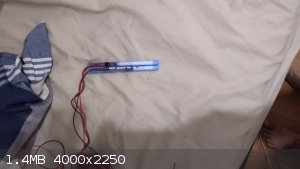 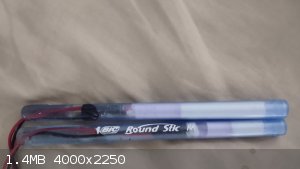
[Edited on 3-1-2022 by ManyInterests]
|
|
|
Laboratory of Liptakov
International Hazard
    
Posts: 1386
Registered: 2-9-2014
Location: Technion Haifa
Member Is Offline
Mood: old jew
|
|
I am curious on witness plate....
Development of primarily - secondary substances CHP (2015) Lithex (2022) Brightelite (2023) Nitrocelite and KC primer (2024)
|
|
|
ManyInterests
National Hazard
   
Posts: 930
Registered: 19-5-2019
Member Is Offline
|
|
WOWOWOWOOW!!!
I used the smaller one by inserting it into a solid block of wood. Actually it's two blocks of wood that I fused together with gorilla glue and
drilled a hole to insert the detonator in it and poured hot glue to secure it in place.
I want to make it clear that the wood blocks aren't plywood. They're solid blocks of very hard, very tough wood...
I put it in the middle of my bucket and covered it with sawdust, top and bottom. Look at the pics! There's nothing left of it. It shattered it to
pieces and I still think there are more bits of wood in the bucket. I put some weight on the bucket top to try to keep the lid on, and it threw off
all the stuff on top of it. Thankfully the bucket is still intact and I put it on a platform so it doesn't damage the floor if it blew through the
bottom.
If this is the 'small' detonator I made with 0.5 grams of ETN and 0.2 grams of NHN I do NOT want to set off my overpowered detonator in the bucket,
because I am certain that it will blow it apart!
The small detonator, from my research into military and civilian detonators, is as powerful as a military blasting cap, so it should be sufficient for
tough explosives like RDX/C4 or military dynamite. The overpowered one was done to the specs of the Improvised Munitions Handbook and I can understand
why they wanted to make improvised detonators so powerful... they want positive detonation of any explosive.
I also made a third detonator (1 gram ETN, 0.43 grams of NHN) and there is some odd discoloration between the NHN and ETN layer. I am not sure what is
happening there...
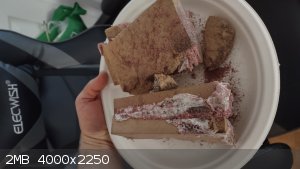 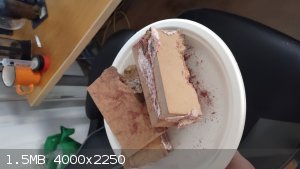
|
|
|
Gargamel
Hazard to Others
  
Posts: 166
Registered: 9-3-2013
Member Is Offline
Mood: No Mood
|
|
Did you read what Doc Liptakov wrote?
That wood test - it looks impressive, but I'm not convinced.
|
|
|
Laboratory of Liptakov
International Hazard
    
Posts: 1386
Registered: 2-9-2014
Location: Technion Haifa
Member Is Offline
Mood: old jew
|
|
Unfortunately, I know from experience that wood shows basically nothing. Even if it was for 100 pieces. A similar test with a similar result as in the
picture is necessary.
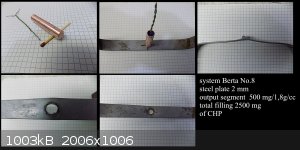
Development of primarily - secondary substances CHP (2015) Lithex (2022) Brightelite (2023) Nitrocelite and KC primer (2024)
|
|
|
| Pages:
1
..
3
4
5
6
7
..
18 |